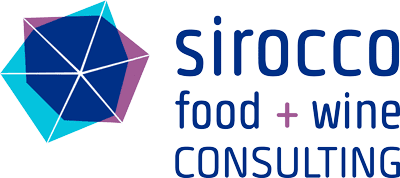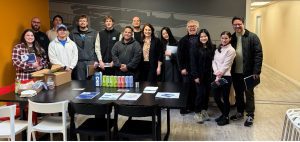What is sensory science?
According to the Institute of Food Technologists1 (1975), sensory science is “the scientific discipline used to evoke, measure, analyze, and interpret those reactions to characteristics of foods and materials as perceived through the sense of sight, smell, taste, touch and hearing.” Koehl et al. (2007) offered an alternative definition: “Under predefined conditions, a group of organized individuals evaluate attributes of a group of products with respect to a given target.” Principles of Sensory Evaluation of Food2 was first published in 1965 by Amerine, Pangborn, and Roessler. The field of sensory evaluation expanded rapidly after the 1950s and was supported by the growth of processed food and consumer products.
Applications
The primary function of sensory testing is to conduct valid and reliable tests to provide data on which sound decisions may be made (Meilgaard et al., 1999)3.Sensory testing reduces the risk associated with launching the wrong product to market. By identifying customer preference and product profiles pre-launch, it increases the chance of market success. Sensory testing may be applied to an array of consumer goods such as food and drink, alcoholic beverages, cosmetics, textiles and healthcare products. In industry, sensory science is practiced by Quality Control and Product Research and Development. Quality and R&D teams use sensory tools to establish product specifications. Sensory methods are also part of the new product development cycle and are used to validate new product prototypes prior to plant and market trials.
Common sensory tests
Sensory testing refers mainly to discrimination, descriptive and affective/hedonic tests. Discrimination and descriptive analysis are used to detect differences or characteristics between 2 products or amongst multiple samples. Hedonic tests, on the other hand, aim at exploring consumer preferences.
Tastelweb Sensory Tests
Discrimination tests
Discrimination tests are used when the sensory panel leader wants to identify whether two products are perceptibly different with a level of certainty. Types of discrimination tests include the triangle test, duo-trio tests and paired comparison tests. These tests which use 2 or 3 experimental samples, do not provide a description of how samples differ, just the confirmation that an overall difference exists.
Descriptive tests
Descriptive analysis employs trained and discriminant sensory panelists that are employed to profile products according to key descriptors or attributes. The assessment can rely on categorical or numeric measurements and scales. The sensory data produces a sensory profile of the food or product under study. Depending on the product, panelists may rate product appearance, product aroma and flavour or texture. Auditory and touch evaluations can also be performed. These tests rely on the panel’s understanding of sensory terms so that assessments are reproducible and repeatable.
Affective tests
The objective of affective tests is to differentiate products based on consumer preference levels. Assessors should be familiar with the products so that they may express degrees of product acceptance, preference or dislike. An adequate number of observations should be collected in order to perform some market analysis and segmentation.
Building sensory capability
When the decision has been made to train an in-house sensory panel, detailed procedures should be developed and implemented for the in-house panel leader to execute the recruitment and provide basic sensory training to selected panelists. The goal of this exercise is to assess participant engagement and sensory acuity. Depending on scope, the initial training of the panel may take several weeks.
Deploying sensory tests
Once the sensory resources are available, the panel leader should decide which sensory tests or activities to conduct based on company objectives. Additional training may be required for the sensory team to implement a given sensory methodology. Sensory projects provide consulting services to production, sales and marketing teams. Sensory tools may be used towards achieving the following deliverables:
- Quality evaluation against specifications (identification of defects)
- Competitive sensory benchmarking
- Descriptive profiling of prototypes
- Panel training and development of sensory lexicon for a given product (sensory wheels)
Maintaining the sensory program
Once the panel and panel leader are fluent in the implementation of sensory methodologies, the role of the panel leader will be to monitor panel performance and provide refresher training. The in-house quality/R&D teams may also benefit from continuing education and learn about sensory insights and how they can drive customer acceptance and liking. Sensory evaluation teams should also keep current with best practices and technical advances in the field (i.e., experimental design and data analysis). The Society of Sensory Professionals4 is a good resource towards professional development.
Contact Sirocco to find out more about our sensory training and analytical services.
References:
- IFT – Institute of Food Technologists
- Principles of Sensory Evaluation of Food Publication
- Meilgaard, M., Civille, G.V. and Carr, B.T. (1999) Sensory evaluation techniques. 3rd Edition, CRC Press, Boca Raton.
- Society of Sensory Professionals
Authored publication
Collaborations






